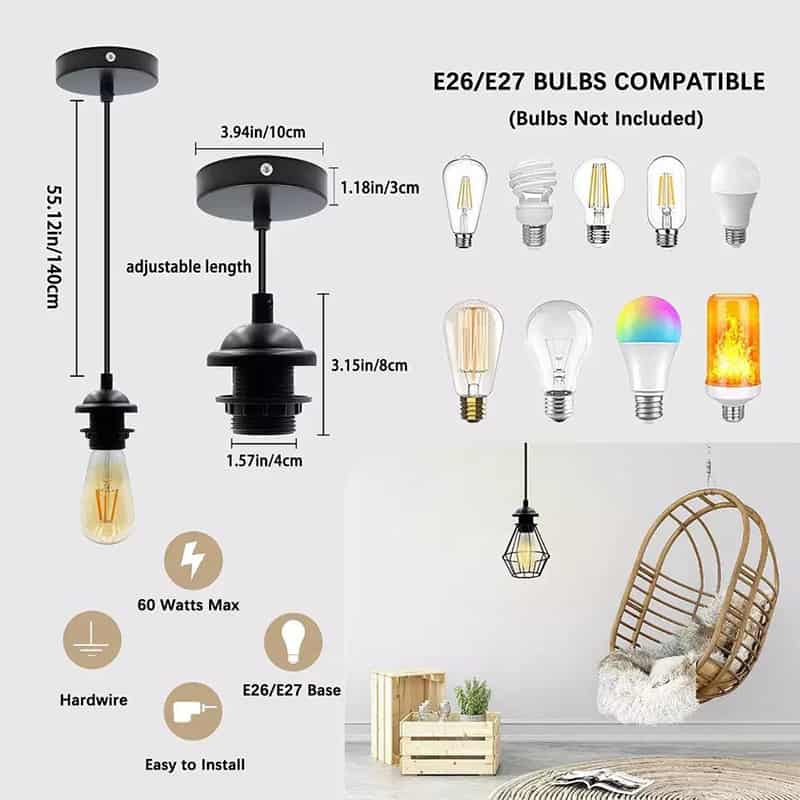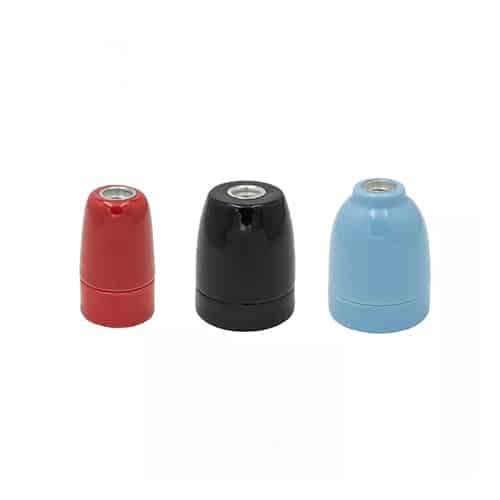Vintage lamps have a timeless appeal and are often the focal point of a room’s décor. However, when you’re rewiring these old things, you need to be concerned about safety. Here’s a question for you. Should you replace the light bulb socket when you’re updating an old lamp?
Yes, replacing the socket is often necessary to ensure safety, functionality, and compliance with modern electrical standards. Damaged or outdated sockets can pose fire hazards or fail to support current lighting requirements, making replacement a prudent choice.
Rewiring a vintage lamp can be a rewarding project, blending classic aesthetics with modern functionality. Understanding the condition of the lamp’s socket is critical to determine whether a replacement is needed and how to proceed.

Understanding Vintage Lamp Sockets
A lamp socket is the core electrical component that holds and connects the bulb to the power source. It plays a pivotal role in the lamp’s operation. Vintage lamps typically use sockets like the Edison Screw or bayonet styles, often crafted from materials such as ceramic or bakelite. Over time, these sockets may show signs of wear, such as rust, corrosion, or loose parts, which can compromise safety and performance.
Sockets in vintage lamps might not meet modern safety standards or handle today’s higher wattage bulbs. It’s essential to evaluate their condition to decide whether they should be reused or replaced.
When to Replace the Socket
The decision to replace a socket hinges on safety and functionality. Outdated sockets may not comply with electrical regulations, increasing the risk of electrical failure or fire. Physical signs, including heat damage, discoloration, or loose fittings, often indicate that the socket is no longer reliable.
Technically, issues such as poor connectivity or brittle insulation are clear signs the socket must be replaced. If the lamp has been unused for an extended period or shows visible damage, replacing the socket is a wise precaution to ensure safe operation.
Testing the Vintage Socket
Before deciding on replacement, testing the socket can reveal its condition. A multimeter can check for electrical continuity, ensuring the socket is still functional. Additionally, inspect the internal components for corrosion, burnt areas, or loose wires. Common issues in vintage sockets include worn-out contacts and degraded insulation, which can lead to electrical shorts.
If the socket fails any of these tests, it’s best to replace it with a modern, reliable counterpart.

How to Replace a Vintage Lamp Socket
Replacing a lamp socket is a straightforward process that requires basic tools and some attention to detail. First, gather necessary items, including a screwdriver, pliers, and a compatible replacement socket. Ensure the new socket matches the lamp’s design and electrical requirements.
Begin by unplugging the lamp and carefully disassembling it to access the socket. Remove the old socket, inspecting the wiring for any damage. Install the new socket by connecting the wires securely, following the manufacturer’s guidelines. Once installed, reassemble the lamp and test it to ensure proper functionality.
Choosing the Right Replacement Socket
Selecting the right socket for your vintage lamp involves balancing functionality and aesthetics. Ensure compatibility with the lamp’s design and bulb type. Edison Screw sockets, like E26 or E27, are common for vintage designs and are often interchangeable depending on voltage requirements.
Pay attention to socket ratings for voltage, wattage, and safety certifications like UL or CE. These certifications ensure the socket meets international safety standards. Ceramic sockets are ideal for high-temperature environments, while bakelite offers a more vintage appearance. Modern options often allow customization to preserve the lamp’s original charm.
Preserving the Vintage Aesthetic
Restoring a vintage lamp doesn’t mean sacrificing its classic style. Modern sockets are available in designs that mimic the vintage look while providing updated safety features. When selecting a replacement socket, consider options that blend seamlessly with the lamp’s original design.
Customization can also enhance functionality. Adding dimmers or updated wiring allows the lamp to meet modern lighting needs while retaining its nostalgic appeal. Preserving the aesthetic integrity of a vintage lamp ensures it remains a treasured piece in any setting.
Frequently Asked Questions
Can I reuse the original socket safely? If the socket shows no signs of damage and passes electrical tests, it may be safe to reuse. However, updating to a modern socket is generally recommended for improved safety and compatibility with current bulbs.
What certifications should the new socket have? Look for sockets with certifications like UL for the U.S. market or CE for European standards. These ensure the socket meets rigorous safety and quality requirements.
Final Words:
Rewiring a vintage lamp is an excellent way to bring new life to a cherished piece while ensuring safety and functionality. Replacing the lamp socket is often a necessary step to meet modern electrical standards and maintain reliable performance. By choosing the right socket and carefully executing the replacement, you can enjoy the timeless charm of a vintage lamp with the confidence that it is safe and efficient.














